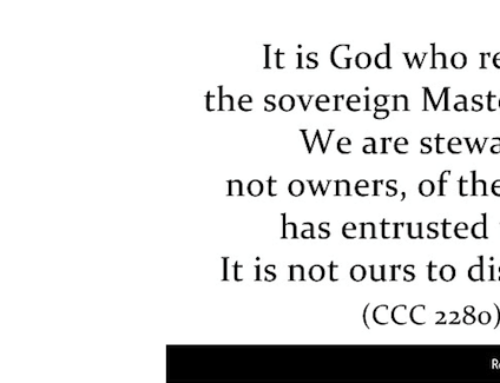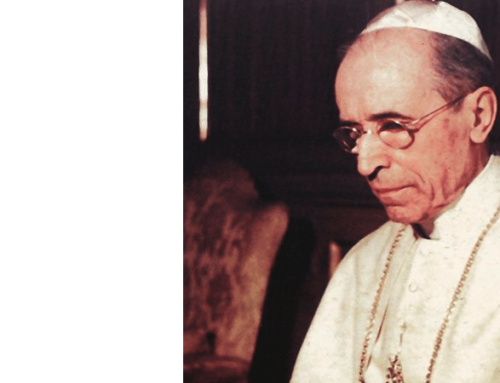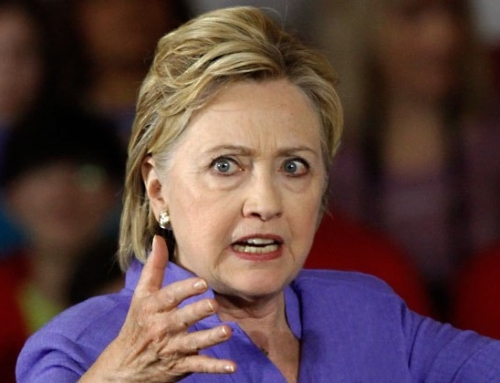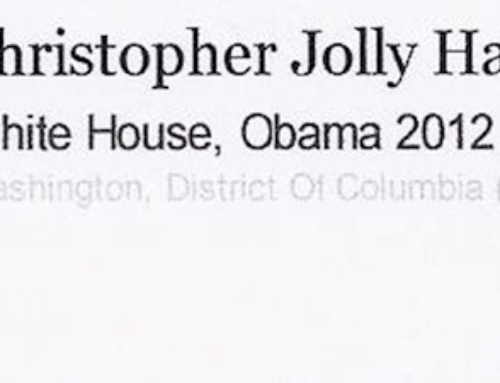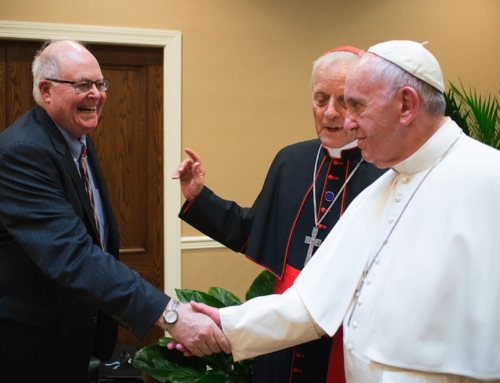by William Doino, Jr.
(Catalyst 4/2005)
Eight years ago this month, the New Yorker magazine published a spectacularly long article entitled “The Silence.” Written by the resigned priest James Carroll (now a columnist at the Boston Globe), it argued that the doctrine of papal infallibility and the Church’s insistence “upon the primacy of Jesus as a means to salvation” were both false and had caused untold harm throughout history. In a misunderstanding of papal infallibility remarkable in one who had studied Catholic theology, Carroll contended that the doctrine prevented the Church from acknowledging its own guilt, causing John Paul II to remain “silent” in the face of overwhelming institutional sin. “The doctrine of infallibility,” Carroll concluded, “is like a virus that paralyzes the body of the Church.”
“The Silence,” caused a mini-sensation, becoming a focal point for anti-Catholics everywhere, and a conversation piece among the chattering classes. What made the article notable were not its attacks against the pope, its slashing attacks against papal infallibility, nor even its manifold errors about theology and Church history. What caused the greatest impact was Carroll’s attempt to blame Pope Pius XII—and, to a large extent, the Catholic Church itself—for the Holocaust.
Carroll’s charges were hardly novel. As early as 1943, Soviet propagandists concocted tales about Pius XII’s alleged collaboration with Hitler’s Germany, attempting to drive a wedge between the faithful and the Church. After the war, these Communist myths were picked up by the German playwright Rolf Hochhuth—ironically, a former member of the Hitler Youth—whose play The Deputy (1963) attempted to transfer German guilt to an Italian pope. Hochhuth caricatured Pius XII as a cowardly and avaricious man who could have prevented the Holocaust with a few dramatic words, but—because of his own weak character and financial interests—chose to remain “silent.” Carrol’s New Yorker article resumed Hochhuth’s indictment of Pius XII, and extended it.
Although many people dismissed the New Yorker piece—evenCommonweal magazine, often critical of the Vatican, called the essay “factually flawed…logically garbled…theologically incoherent”—Carroll’s attacks against the papacy encouraged anti-papal polemicists, both within and without the Church, to publish their own salvos. Within a few years, a cottage industry of attacks on Pius XII and the Catholic Church emerged: John Cornwell’s Hitler’s Pope (1999); Gary Wills’s Papal Sin (2000); Susan Zuccotti’s Under His Very Windows (2000); Michael Phayer’s The Catholic Church and the Holocaust, 1930-1965 (2000); David Kertzer’sThe Popes Against the Jews (2001); Carroll’s own Constantine’s Sword(2001); and Daniel Jonah Goldhagen’s A Moral Reckoning (2002).
On the talk-show circuits and in the academic journals, these books—despite their manifold errors—were greeted with an almost rapturous reception. One man, however, remained unconvinced: Rabbi and historian David Dalin. Disturbed and angered by what he considered the hijacking and exploitation of the Holocaust for partisan purposes, Dalin decided to respond. With degrees in both history and theology, and as a long-time participant in the Jewish-Catholic dialogue, he had both the knowledge and the authority to rebut the anti-papal polemicists, and write accurately about the Catholic Church and the Holocaust. The result was a series of essays and reviews, the most important being his first one, “Pius XII and the Jews,” a 5,000-word analysis of the entire controversy in theWeekly Standard of February 26, 2001.
Translated into several languages, Dalin’s article became one of the most widely reprinted essays on Pius XII. What struck so many people about Dalin’s work was not just his point-by-point refutation of Pius’ detractors, but his dramatic conclusion: “Pius XII was, genuinely and profoundly, a Righteous Gentile.”
To be sure, Dalin’s essay did not please everyone, particularly those who had made a small fortune off of the Deputy Myth, or whose ideological disagreements with the Church were energized and sustained by that myth. The attack became all the more ferocious. In an essay published in the journal First Things, Joseph Bottum argued that although Pius’s supporters had demolished the accusations against the wartime pontiff, they had lost the larger war over Pius’s cultural reputation—or at least, not yet won it—because the opponents of Pius XII still wielded the most influence. Bottum’s conclusion, however, may have been a bit premature.
In reality Pius’s supporters were growing in influence, not just in America, but throughout the world. Discussing this matter among ourselves, we decided to put together an anthology which would do what had not yet been done: answer the recent critics of Pius XII all at once, within a single cover, in a comprehensive, measured fashion. The result is The Pius War: Responses to the Critics of Pius XII, edited by Bottum and Dalin, and published by Lexington Books.
The first hundred pages of the book collect the best essays and reviews—selected from literally hundreds of possibilities—of the various attack books which have appeared during the past decade. The criteria for selections were eloquence, force of persuasion, depth of knowledge and, above all, historical accuracy—as the contributions would be worthless unless they could prove their case.
Hence, two distinguished Church historians—Dr. Rainer Decker of Germany, and Fr. John Jay Hughes—respond, respectively, to Cornwell’sHitler’s Pope, and Michael Phayer’s The Catholic Church and the Holocaust—explaining what really happened during the Nazi roundup of Rome’s Jews (which was at the heart of Hochhuth’s malicious play). Professor Ronald Rychlak, the foremost Pius scholar in America, deconstructs Susan Zuccotti’s claim that Pius XII did “little or nothing” to assist persecuted Jews; Robert Louis Wilken, an eminent historian of Christianity at the University of Virginia, delivers a body blow to James Carroll’s Constantine’s Sword; teacher and publisher Justus George Lawler takes issue with Gary Wills’ scatter-shot attacks and deeply flawed history; papal scholar Russell Hittinger responds to David Kertzer’s The Popes Against the Jews; archival expert John Conway critiques historians who speak darkly about the Vatican’s “secret” wartime archives—while never having studied the voluminous Vatican archives already released in eleven volumes; Michael Novak responds to Daniel Goldhagen’s aspersions against Pius and the Church; and Kevin M. Doyle contributes the unexpected gem of the book, an analysis of the so-called “hidden encyclical,” against anti-Semitism, intended by Pius XI and allegedly suppressed by Pius XII. Doyle shows that, far from remaining “hidden,” the encyclical was transformed and published just six weeks after the beginning of the Second World War under a different name, Summi Pontificatus, condemning racism in all forms. Add to this Dalin’s famous essay, and an introduction and concluding essay by Bottum.
Following these essays is my own contribution: an 80,000-word, 180-page annotated bibliography which attempts to canvass every aspect of this controversy—with a focus on demonstrating how Pius XII, far from remaining “silent,” condemned anti-Semitism, racism, and genocide before, during and after the Holocaust. Constituting some two-thirds of the book, my bibliography has been very generously called “a tour de force of scholarship and highly readable to boot” (National Review, February 14). My purpose was to provide a kind of historical road map, an intellectual compass, for both laymen and scholars alike, who want to know more about this subject—and want to know which authors can be trusted, which cannot—and why.
As important as we believe The Pius War is for recovering historical truth, it does not downplay or whitewash the sins of the “sons and daughters” of the Catholic Church, to quote John Paul II. Many of the essayists speak frankly about anti-Judaism and anti-Semitism, and the bibliography has a long section on Jewish-Catholic relations, covering every aspect of this turbulent relationship, light and dark alike.
Already we can see signs of change. A movie of Hochhuth’s Deputy called “Amen” was released in 2002 only to become an international flop, garnering highly negative reviews. Hochhuth himself was recently caught praising the notorious revisionist historian—and accused Holocaust-denier—David Irving, thereby discrediting himself even further. John Cornwell recently stated that he now finds it “impossible to judge” Pius XII, in light of “the debates and evidence” that followed publication of his now-discredited Hitler’s Pope. Even Susan Zuccotti, writing in the esteemedHolocaust and Genocide Studies (Fall 2004), while still maintaining her excessively skeptical attitude toward Pius XII’s involvement in rescue efforts, acknowledges evidence she previously overlooked, and now believes there is “much room for compromise and reconciliation” between participants in this debate. So, progress has been made, and continues to be made, as new archives are opened, new books are written, new perspectives are formed.
William Doino Jr. is a Catholic author and commentator. A contributing editor to Inside the Vatican, he has been published in such journals as National Review, Modern Age, and Crisis, and is now researching and writing a book on the Vatican’s role during the Second World War.


